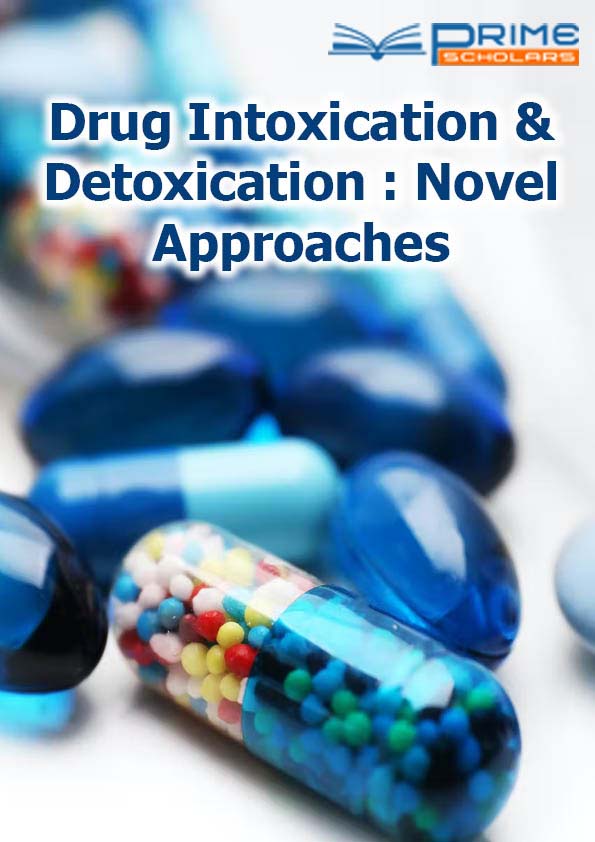Commentary - (2025) Volume 6, Issue 2
Tiny Spheres with Big Potential in Drug Delivery
Chen Cao*
Department of Drug Discovery, Peking University, Beijing, China
*Correspondence:
Chen Cao, Department of Drug Discovery, Peking University, Beijing,
China,
Email:
Received: 14-May-2024, Manuscript No. DIDNA-24-19863;
Editor assigned: 16-May-2024, Pre QC No. DIDNA-24-19863 (PQ);
Reviewed: 30-May-2024, QC No. DIDNA-24-19863;
Revised: 13-Jun-2025, Manuscript No. DIDNA-24-19863 (R);
Published:
20-Jun-2025, DOI: 10.36648/DIDNA.6.2.54
Description
In the realm of nanotechnology, micelles are gaining increasing attention as powerful tools for drug delivery. These microscopic spheres, composed of amphiphilic molecules, offer a unique solution to the challenges of delivering therapeutic agents to specific targets in the body. In this article, we explore the structure, properties, applications and potential impact of micelles in the field of medicine. Micelles are self-assembled colloidal particles formed by amphiphilic molecules in aqueous solutions. These molecules typically consist of a hydrophilic "head" region and a hydrophobic "tail" region. When dispersed in water, amphiphilic molecules spontaneously arrange themselves into spherical structures called micelles, with the hydrophobic tails sequestered in the core and the hydrophilic heads facing outward, exposed to the surrounding solvent. The structure of micelles is characterized by their core-shell morphology, with hydrophobic drug molecules solubilized within the core and hydrophilic segments oriented towards the aqueous environment. This unique arrangement allows micelles to encapsulate a wide range of poorly water-soluble drugs, including small molecules, peptides and nucleic acids, thereby improving their solubility, stability and bioavailability. Micelles solubilize hydrophobic drugs within their core, increasing their aqueous solubility and facilitating their delivery to target tissues or cells. Surface modification of micelles with targeting ligands, antibodies or peptides enables specific recognition and binding to diseased cells or tissues, leading to enhanced drug accumulation and reduced off-target effects. Micelles can be engineered to release drugs in a controlled manner, either through passive diffusion or stimuli-responsive mechanisms, offering precise control over drug release kinetics and pharmacokinetics. Micelles are generally biocompatible and biodegradable, minimizing the risk of adverse reactions and toxicity in the body. Micelles have found applications in various therapeutic areas, including oncology, infectious diseases, inflammatory disorders and cardiovascular diseases. In oncology, for example, micellar formulations of chemotherapeutic agents such as paclitaxel and docetaxel have been developed to improve drug solubility, reduce systemic toxicity and enhance tumour targeting. In infectious diseases, micelles can deliver antimicrobial agents to infected tissues or cells, overcoming barriers such as biofilm formation and drug resistance. Micellar formulations of antibiotics, antifungals and antivirals have shown promise in treating bacterial infections, fungal infections and viral diseases. Recent advances in micelle technology have focused on enhancing their stability, targeting efficiency and cargo-loading capacity. Strategies such as surface functionalization with targeting ligands, incorporation of stimuli-responsive polymers and utilization of novel amphiphilic molecules are being explored to improve micelle performance in vivo. Looking ahead, the future of micelle-based drug delivery holds tremendous promise for personalized medicine, combination therapy and theranostic applications. By leveraging advances in nanotechnology, materials science and molecular biology, researchers are poised to unlock new frontiers in drug delivery and reshape the landscape of healthcare. Micelles represent a versatile and effective platform for drug delivery, offering unique advantages such as enhanced solubility, targeted delivery and controlled release. From cancer therapy to infectious disease treatment, the potential applications of micelle-based drug delivery systems are vast and far-reaching. As scientists continue to innovate and refine micelle technology, we can expect to see significant advancements in medicine and improvements in patient care worldwide.
Citation: Cao C (2025) Tiny Spheres with Big Potential in Drug Delivery. Drug Intox Detox: Novel Approaches. 6:54.
Copyright: © 2025 Cao C. This is an open-access article distributed under the terms of the Creative Commons Attribution
License, which permits unrestricted use, distribution, and reproduction in any medium, provided the original author and source
are credited.
